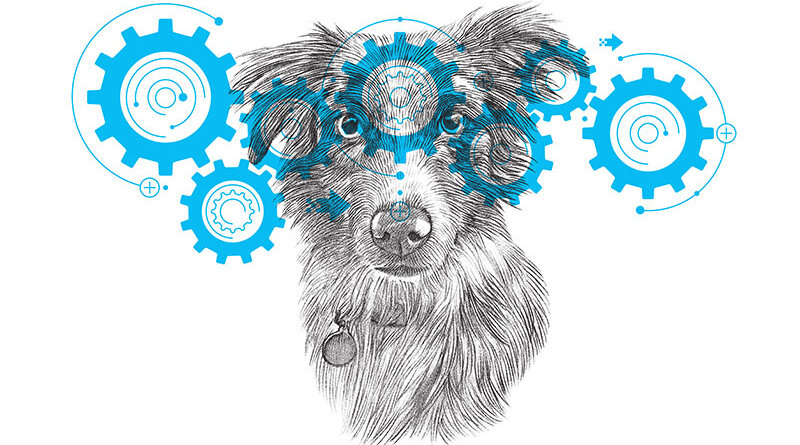7 Better Ways to Describe a Dog Beyond “Smart”
It’s so natural to use the word “smart” to describe dogs that almost everybody does it. However, assessments of intelligence are dependent on context or the task involved, and the term doesn’t always mean the same thing to everyone.
Trainers and behaviorists commonly use other words to describe dogs, terms that are far more useful in understanding them. Here are seven of the most common.
1. Biddable. A dog who is biddable is docile, agreeable and willing to do what you ask. A lot of people want biddable dogs, and are happy to have a dog who wants nothing more than to do what their humans have in mind. Biddable dogs are easy to live with. People without extensive dog-training skills are more likely to successfully train a biddable dog than other types of dogs.
2. Trainable. Dogs who are trainable are often highly engaged with people, curious, eager to try new behaviors and motivated by good reinforcement—often treats. Trainable dogs are able to maintain a high degree of attentiveness and keep their focus. Many of those who describe their dogs as smart are actually commenting on how quickly and enthusiastically their dogs learn, which relates to trainability.
GET THE BARK IN YOUR INBOX!
Sign up for our newsletter and stay in the know.
3. Soft. A dog who is soft is sensitive in various ways. A soft dog can easily be affected by even the gentlest disapproval, no matter how inadvertently or lovingly it’s expressed. Soft dogs will find even a calm “Oh no!” when they get in the garbage or your dismay at something entirely unrelated to them equally upsetting. Other dogs might barely register your gentle exclamations and won’t change their behavior in any way in response to them. Soft dogs are the ones who suffer most when punished, whether the aversive action is verbal or physical. (To be clear, I don’t use punishment with dogs and strongly advocate against doing so with any dog.)
4. Bombproof. This is about as far from an official term as you can get, but many trainers and behaviorists use it to describe a dog who is completely imperturbable. Some dogs can tolerate the most amazing array of issues: rude puppies; loud noises, such as a balloon popping or a stack of pots and pans hitting a tile floor; a person picking them up awkwardly or sneaking up on them from behind; children poking them; and even another dog barking, lunging or snapping at them. Some professionals use their own bombproof dog (if they have one) for working with dog-dog aggression cases because the risk of psychological damage to their own dog is low even if the other dog doesn’t act appropriately.
5. Galoopy (guh-LOOP-ee). This is another informal term making its way into the mainstream. A galoopy dog is an exuberant, goofy and carefree pup who is very happy as well as very energetic. They tend to leap about and collide merrily with whatever or whoever is around, delighting in anything the moment brings. Such dogs appear to be smiling most of the time, especially in social situations, and may also appear to be moving in multiple directions simultaneously.
6. Persistent. Persistent dogs don’t give up easily, and it can be hard to distract them or divert their attention. Many persistent dogs are excellent problem-solvers because they will keep trying to figure things out until they have a solution. It’s great if your dog is persistent with something you want her to continue doing, like working for the very last bit of peanut butter in a Kong while you finish answering your email. It’s not so good if a dog is persistent about barking, or scratching at the cabinet where you keep her food, hours before her dinner time.
7. Affiliative. While “affiliative” means social in nature, it is preferred by behavioral biologists because in biology, “social” simply refers to species that live in groups rather than on their own—say, meerkats as opposed to leopards. Affiliative dogs are especially connected, and bond strongly. They often seek physical contact and like to be close to other individuals. Affectionate and loving, they sometimes make even people who aren’t all that fond of dogs feel very loved.
When it comes to training dogs or developing a relationship with one, there are plenty of ways to describe them other than saying that they are smart. Many such descriptions are more specific and therefore more informative, which is why they are so useful in making sense of the beautiful variation in dogs.



